Adaptec AVA-1505A Product information sheet
Other Adaptec PCI Card manuals
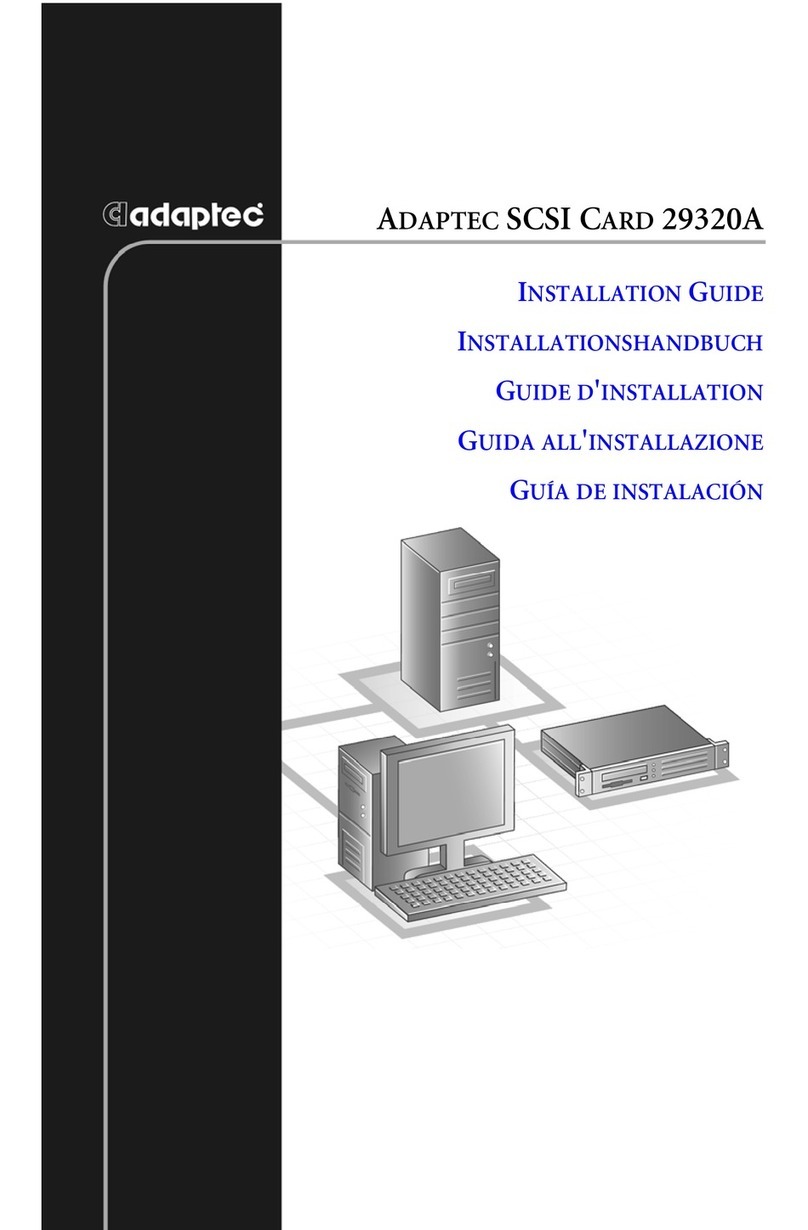
Adaptec
Adaptec 29320ALP-R - SCSI Card Storage Controller U320 320... User manual
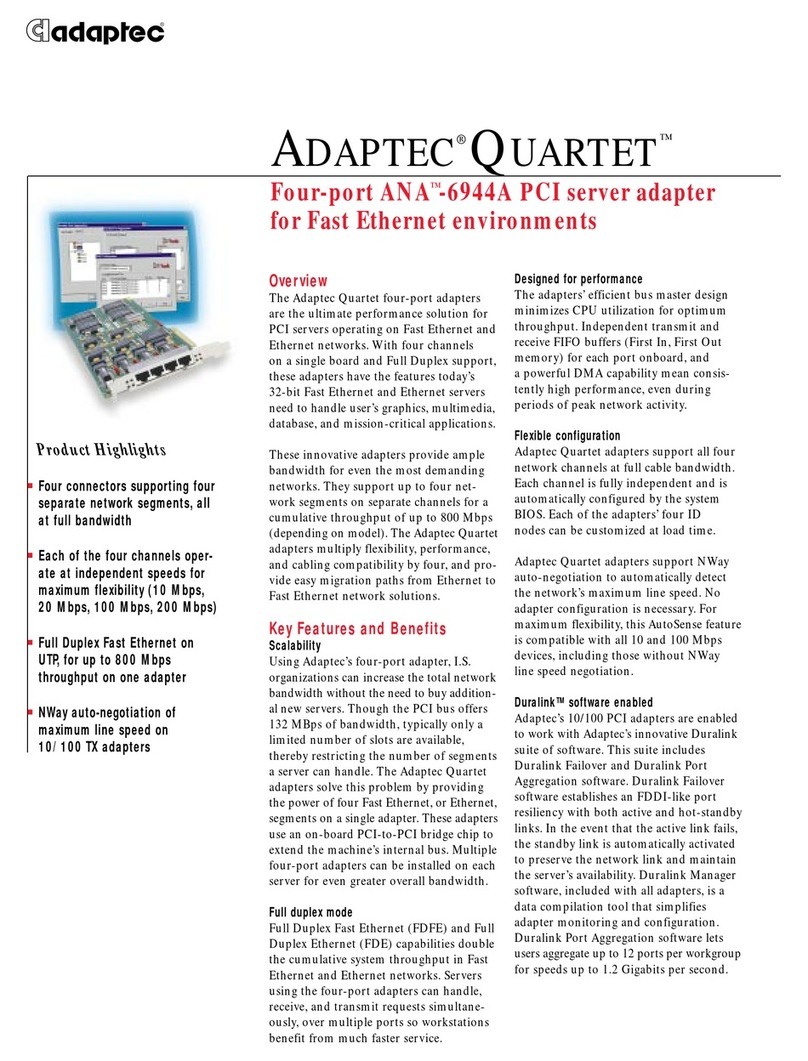
Adaptec
Adaptec ANA-6944A/TX Quartet User manual

Adaptec
Adaptec AHA-2910Bi User manual
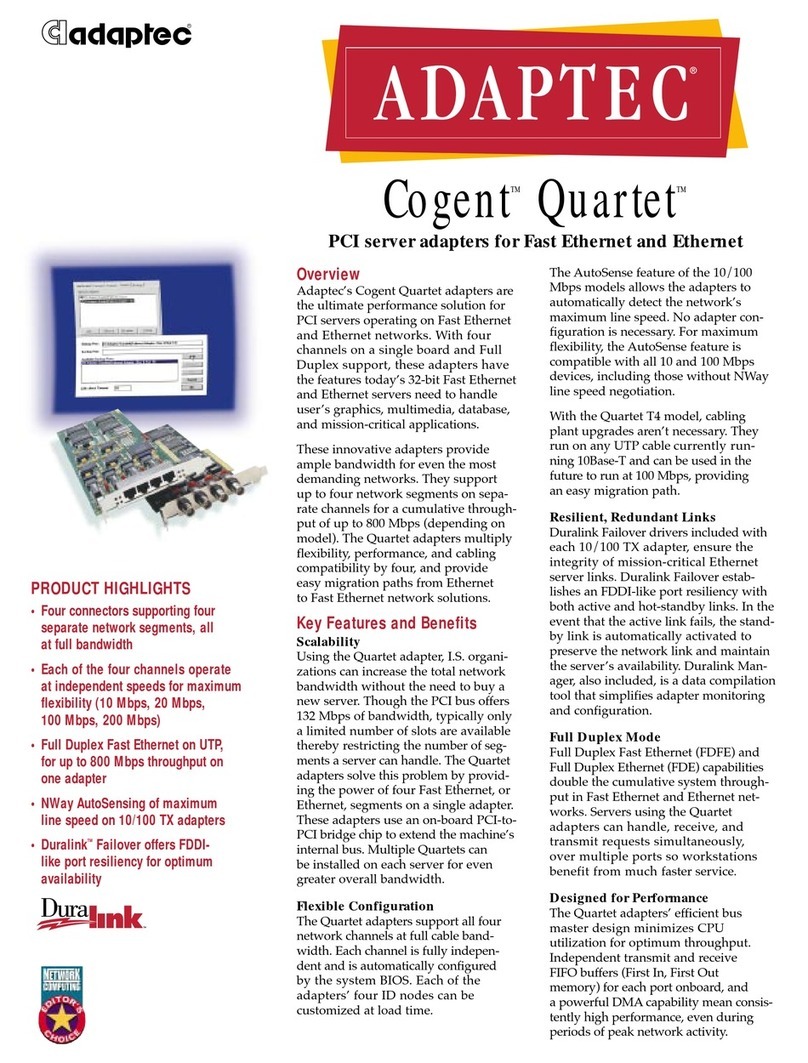
Adaptec
Adaptec ANA-6904 User manual

Adaptec
Adaptec DuoConnect AUA-3121 User manual
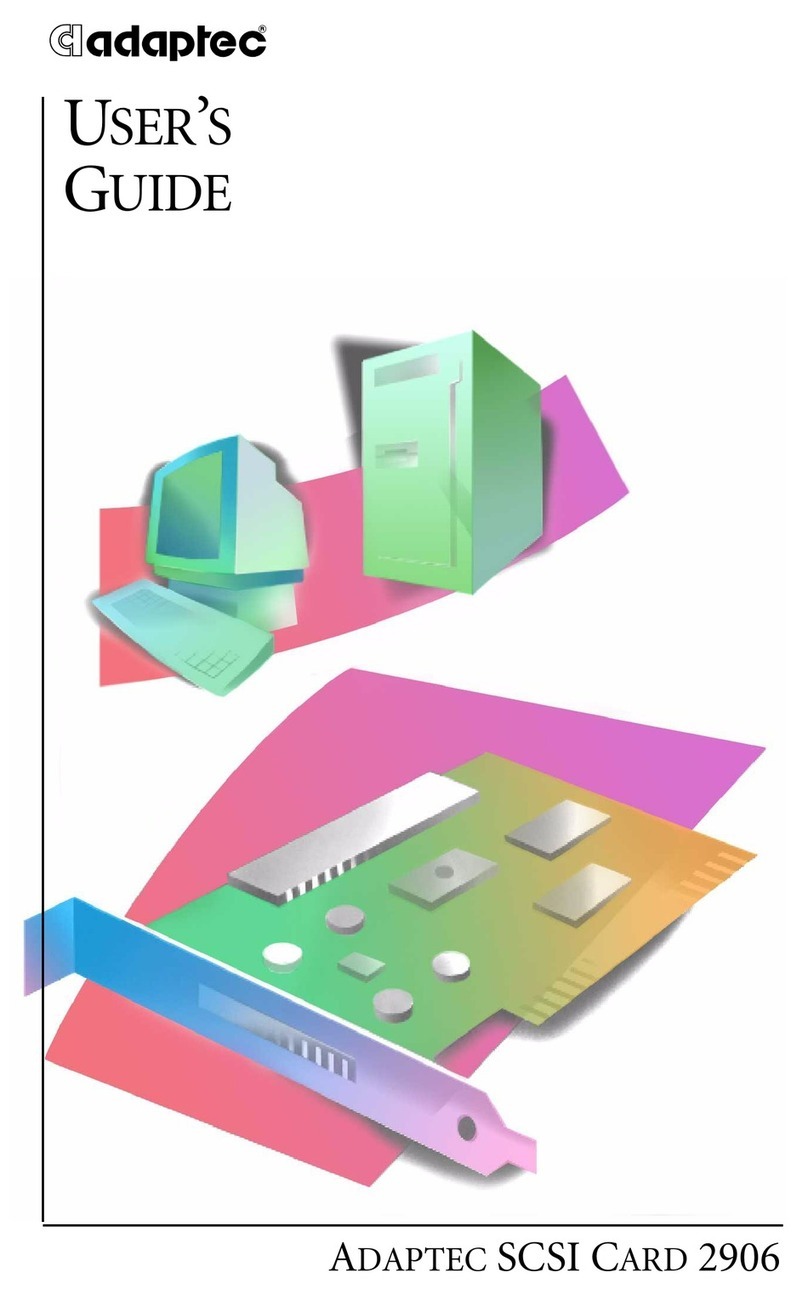
Adaptec
Adaptec AVA-2906 User manual
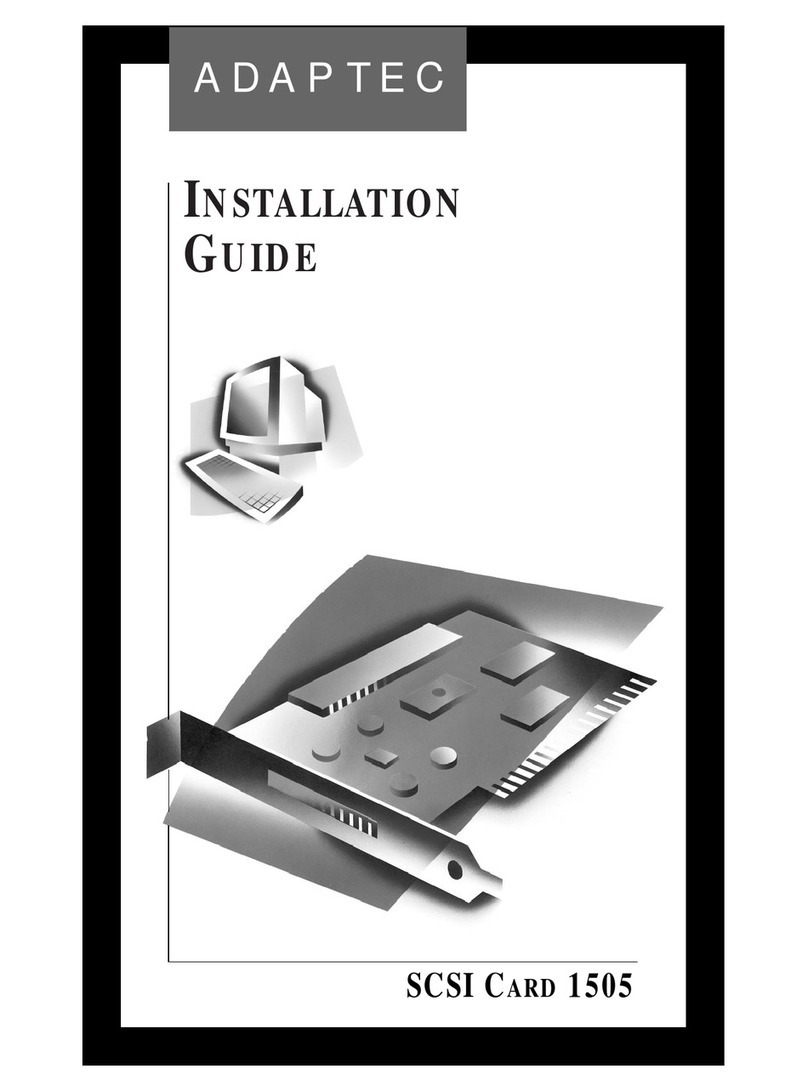
Adaptec
Adaptec AVA-1505A User manual
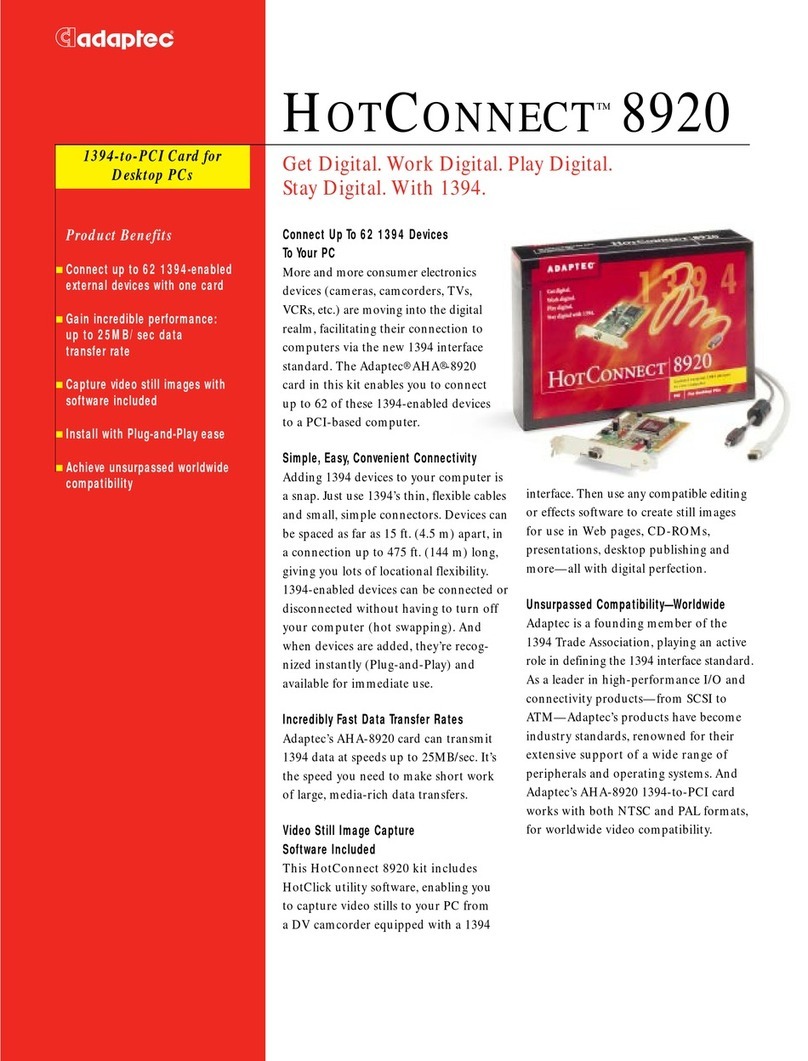
Adaptec
Adaptec HotConnect 8920 User manual
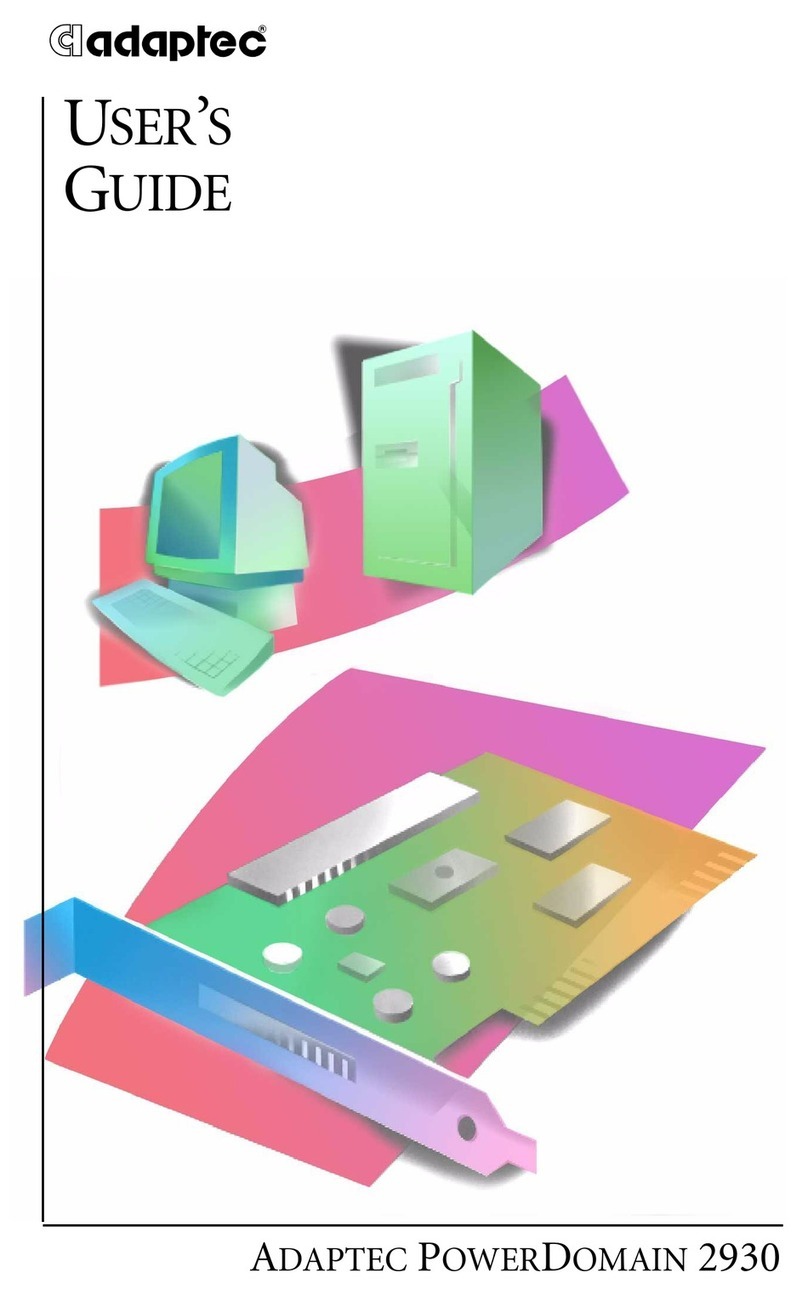
Adaptec
Adaptec APD-2930 User manual
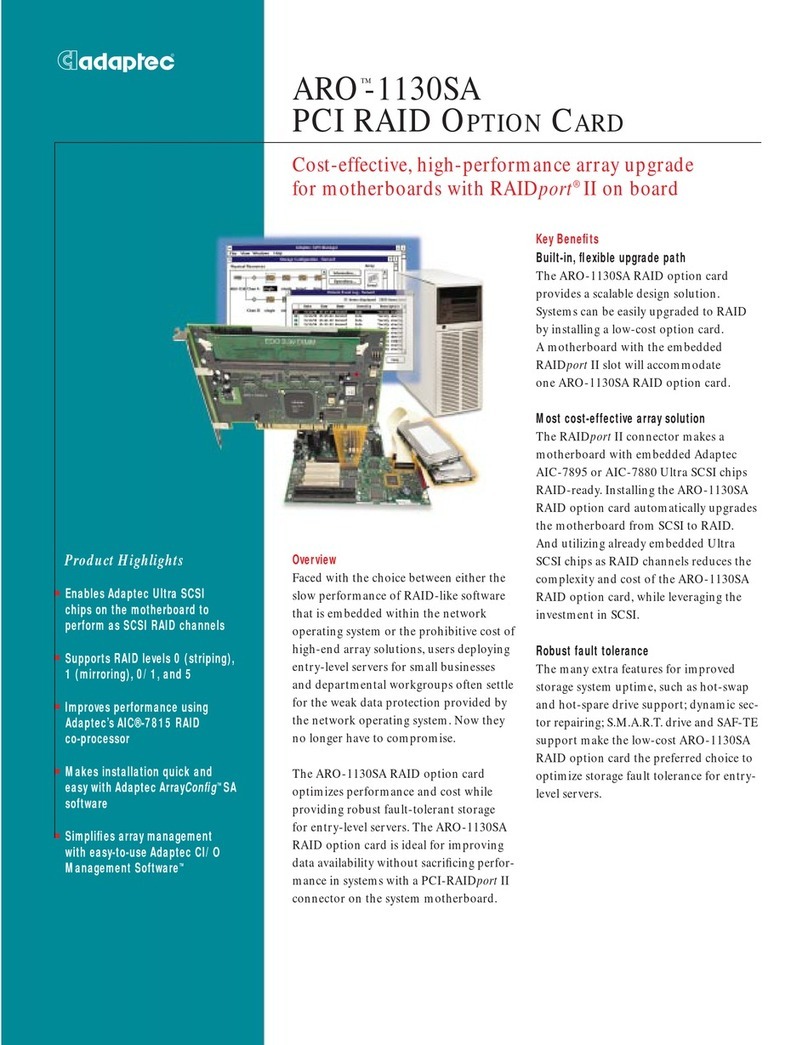
Adaptec
Adaptec ARO-1130SA User manual

Adaptec
Adaptec AVA-2906 User manual

Adaptec
Adaptec ANA-6922A User manual
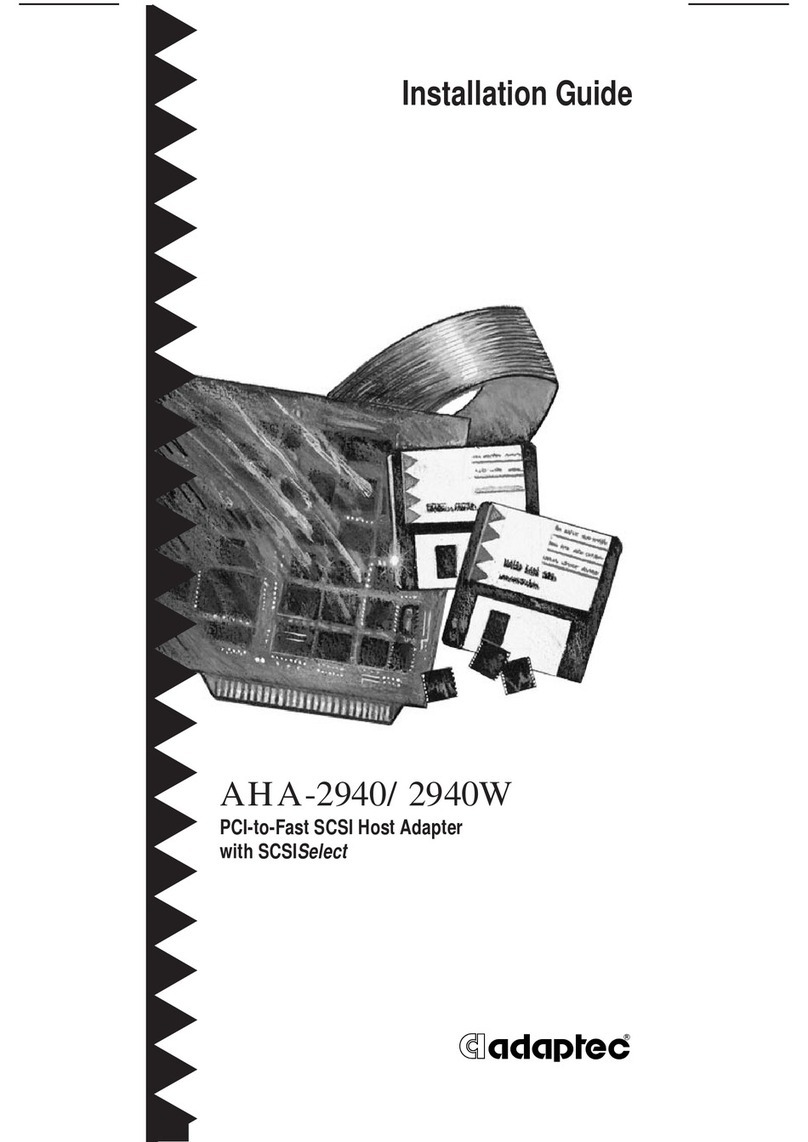
Adaptec
Adaptec 2940W - AHA Storage Controller FW SCSI 20... User manual
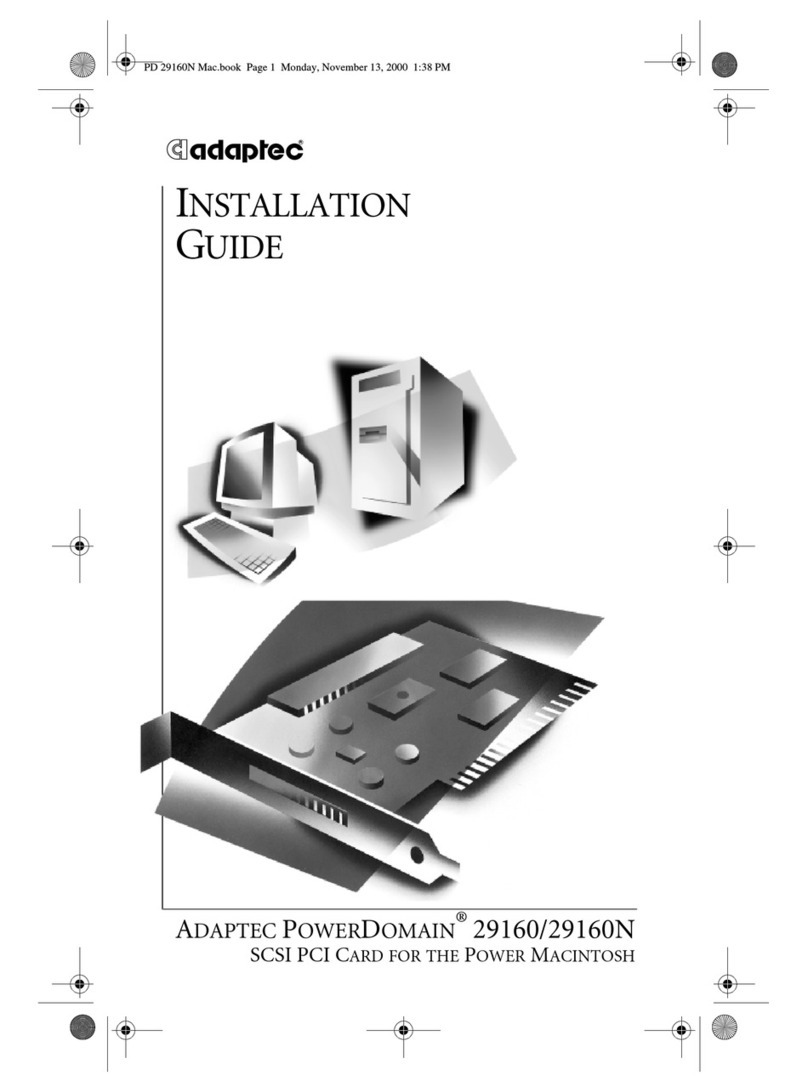
Adaptec
Adaptec APD-29160 User manual
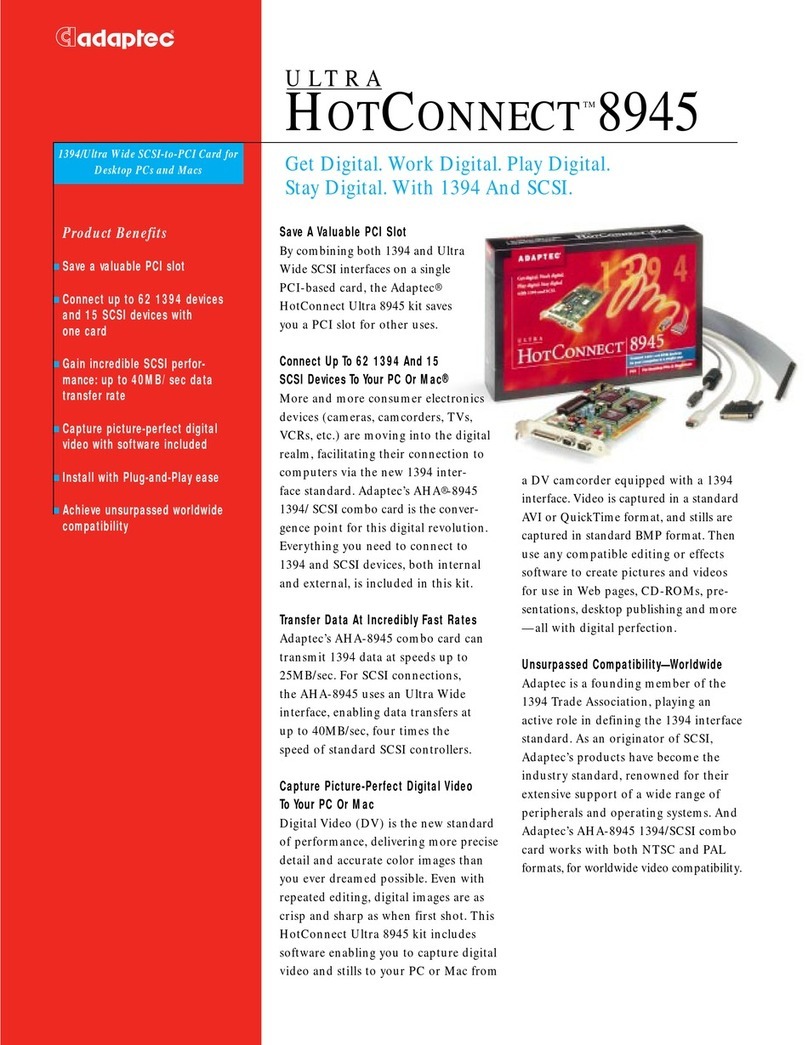
Adaptec
Adaptec Ultra HotConnect 8945 User manual

Adaptec
Adaptec AVA-2906 Product information sheet
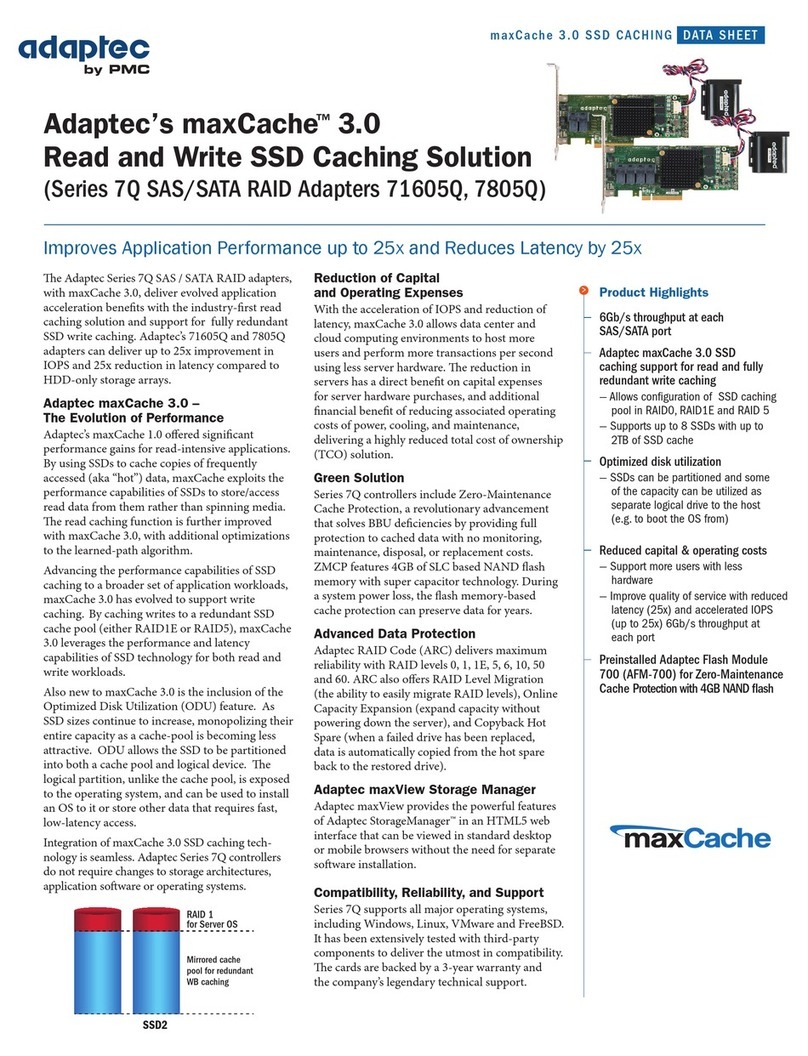
Adaptec
Adaptec 71605Q User manual
Popular PCI Card manuals by other brands

ICP DAS USA
ICP DAS USA PCI-1002H user manual

Exsys
Exsys EX-60102 manual

Chelsio Communications
Chelsio Communications T5 Series Installation and user guide

Conrad Electronic
Conrad Electronic 97 46 71 operating instructions

Micro Innovations
Micro Innovations USB650A Quick installation guide

KTI Networks
KTI Networks KF-310 user guide





















